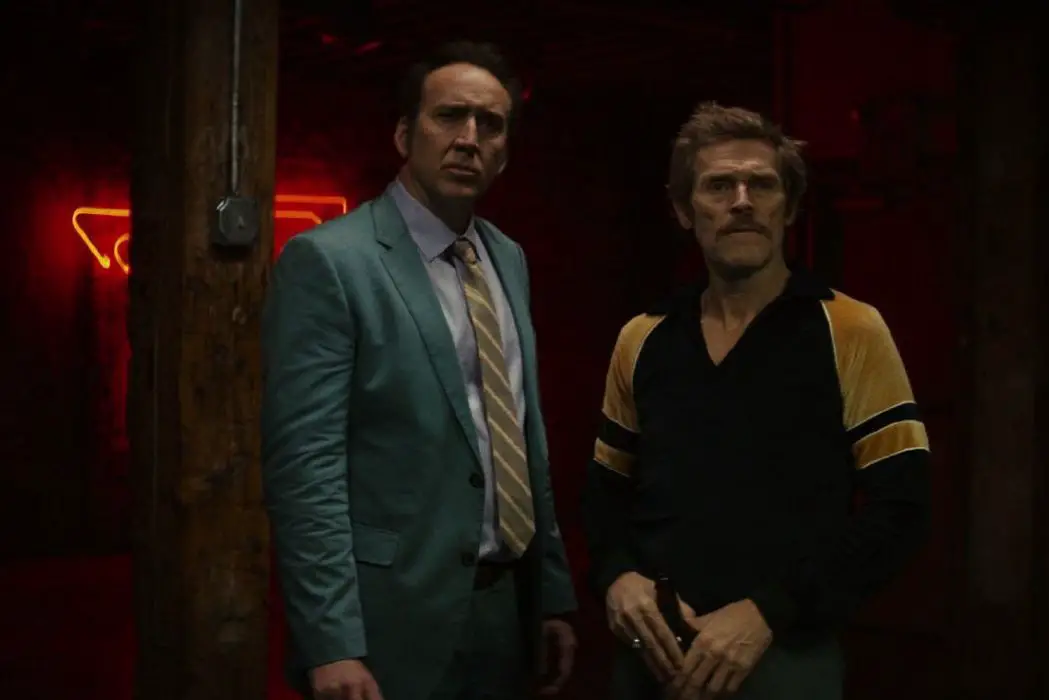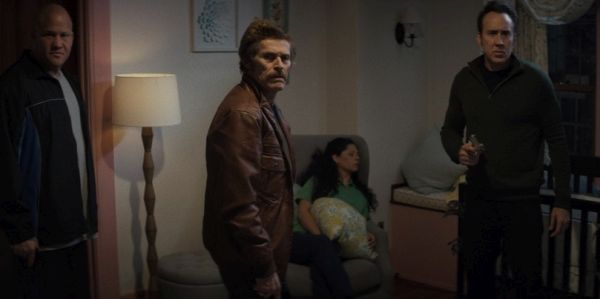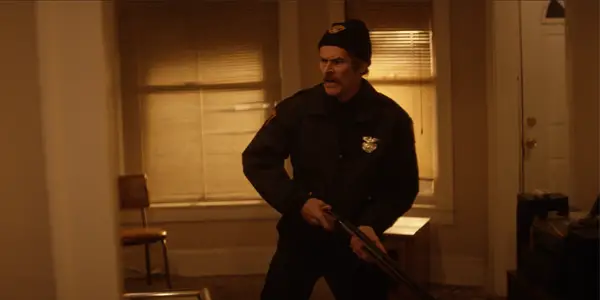DOG EAT DOG: Arthouse Meets Grindhouse

Alex is a 28 year-old West Australian who has a…
Ever heard of the auteur theory? For those unaware, it’s basically the theory that a film’s director, who overlooks all the visual and audio elements in a film, is the sole author of a film, eliminating the voices of the screenwriter, producers and the countless amounts of people involved in its creation. Filmmakers who fit within the auteur theory usually have an easily identifiable visual palette, a repeated set of aesthetics that parallel each other in all of their works.
Some well known auteur-driven directors include Wes Anderson and Quentin Tarantino, mainstream directors who have a deliberate and recognisable way of telling a story. Now, this is a great way of discussing and dissecting the way certain directors choose to deliver their narratives, but this ultimately places the director into a box, that the audience starts to heavily identify with.
If Tarantino ever chose to make a quirky rom-com or a traditional noir film, no matter how good it was, audiences would riot. By pre-deciding how a certain director’s work should be emulated due to their past work, viewers will alter their ultimate feelings on the material, ignoring the actual quality of the film itself.
Abandoning The Establishment
This idea bleeds heavily into Paul Schrader’s latest film, Dog Eat Dog, a high-octane comedic crime thriller that is a completely different beast than anything Schrader has made before. Whilst Schrader will always be credited as “The Writer of Taxi Driver”, Schrader has quite a terrific and accomplished body of directing work, starting with the excellent debut Blue Collar back in 1978.
Heavily influenced by the works of Yasujiro Ozu and Robert Bresson, Schrader’s work can be identified via the auteur theory. Mixing 1970’s American New Wave aesthetics, the subtle narrative delivery of Ozu and the use of established genre tropes are the key elements of Schrader’s filmmaking style throughout the years.

Whilst this doesn’t exactly apply to all of his works (Mishima: A Life in 4 Chapters is an incredibly unique biopic), Schrader is a director who likes to dissect the underbelly of America, examine its psychology and explore the consequences of every action we make. His best known films, Hardcore, Affliction and American Gigolo, all combine genre elements with slow burn drama, subverting the standard structure of the genre films he borrows from.
Despite this, Schrader does not consider himself a crime movie director. Even with his frequent collaborations with friend Martin Scorsese (Taxi Driver and Bringing Out the Dead), Schrader has never made a pure crime film, one which focuses on the crimes, not the psychology behind them. This is why his newest movie is such a fascinating turn for the 70-year old director, who, after a frustrating and damaging experience making the Nicholas Cage vehicle Dying of the Light in 2014 (a film which was taken from Schrader’s hands and completely re-edited), has decided to do something completely different in the form of Dog Eat Dog.
Based on the 1996 novel by Edward Bunker (the author best known for his starring role as Mr Blue in Reservoir Dogs), Dog Eat Dog is a modern day exploitation film. Playing with a new set of cinematic tools, Schrader employs a variety of post-modern visual cues to not only update the novel’s 90’s setting, but Schrader’s own directional style.
Gone is Schrader’s well-established slow burn attitude as the genre elements are full-on rather than subtle. Viewers who are aware of Schrader’s history might be put-off by how bombastic this film is, with Schrader alerting the audience immediately with an opening scene that is incredibly confrontational in nature, a grisly conflict that lets audiences know what type of film they’re about to watch. So is Schrader’s shift towards exploitation cinema a successful one? Kinda.
The Typical Loser Criminals
Dog Eat Dog revolves around a trio of desperate criminals, Troy (Nicholas Cage), the pseudo-leader of the group, Diesel (Christopher Matthew Cook) the group’s muscle and Mad Dog (Willem Dafoe) the coked-up wildcard who values his ambiguous friendship with the gang. Due to previous prison sentences limiting their employment options, the three decide to use Troy’s contacts and work for career criminal Grecco the Greek (a sneaky cameo by Schrader).
He gives them a troubling job: as a favour to influential crime boss Chepe (Reynaldo Gallegos), the trio must kidnap the newly-born baby of Chepe’s rival. Whilst the task seems risky, the large payout if Chepe’s rival pays the ransom is too enticing for the desperate criminals. Their decision leads down a dark path that puts everyone’s lives at risk, proving the old adage of if someone’s too good to be true, then it probably is.

Nicholas Cage plays the film’s straight man, a fun role that shows us that Cage can still be an effective actor when given the right material, someone who has sadly been marginalized into becoming a lame Reddit/Tumblr meme, with his acting history boiled down to yelling compilations and freeze frame captures. Dafoe shines here too, not only sharing hilarious chemistry with Cage, but breathing a disturbing life into the crazed individual of Mad Dog. As Dafoe and Schrader have collaborated five times previously, you can clearly see that they have a productive collaboration, with Schrader understanding Dafoe’s strengths as an actor.
Rounding off the main trio is Christopher Matthew Cook, a relatively new actor who manages to hold his own against the acting heavyweights he’s working with. The only questionable casting choice in the film is Schrader himself, who due to his older age and asthmatic problems, has some key expository dialogue scenes that can be quite hard to understand. His performance isn’t bad, it’ s just his delivery isn’t clear enough for the important information he spouts, as he pretty much introduces the film’s main plot and backstory.
Seeing What Sticks
The biggest problem with the film lies with the narrative itself, an inconsistent story that shifts between predictability and directionless meandering. The basic plot synopsis – a group of criminals attempt a risky job in order for a high reward – is one done hundreds of times before. So when you see a film attempt this type of plot again, you hope that it is either going to subvert the tropes of that associated type of film or do a completely fresh and re-energised take on the material.
Schrader has attempted to re-energise the material, but his fresh aesthetics completely clash with the film’s predictable and stale narrative. The first two acts have some great setup potential and individual moments, all pieces that are setting up for an explosive and hilarious climax, but sadly the film’s third act is where it completely falls apart, with the narrative finishing in a rushed fashion that leaves many plot points unsatisfactorily open-ended. To add to this, the film’s final five minutes is a bizarre and unnecessary sequence that sours the complete film, a scene that could’ve (and should’ve) been cut, even though it wouldn’t save the film’s ultimate anti-climactic feeling.

The film’s distinctive visual arrangement is its biggest weapon, a series of inventive cinematography techniques that feels like something out of Crank. Schrader is throwing everything at the wall and seeing what sticks, with a 50/50 ratio of it working. The different styles include: black and white footage, slow-motion, first POV of a bullet, textured animation, in-screen pop-ups and more. Some of it works, really helping sell its anarchic tone, with a new scene often injecting a completely new technique to invigorate the film as soon as it slows down.
When it doesn’t work, it sticks out like a sore thumb, such as a series of scenes shot in black and white with seemingly zero motivation or narrative functionality. When stuff like that is done, it gives off a very contrived feeling, that Schrader is trying way too hard to keep our attention away from the stagnant narrative. Even though it’s his most exciting work in years (especially after the complete bore-fest that was The Canyons), you get the feeling that Schrader should’ve dialled it down a notch, spent less time trying to experiment with a scene and more time trying to fix the glaring plot problems.
The Verdict
Dog Eat Dog is a frustrating film. You genuinely feel that Schrader is back in form, giving it his all and actually attempting to try new things to make his subtle style seem fresh and exciting. Despite his history in genre filmmaking, Schrader has technically never made a pure exploitation film like he has here.
Whilst diverting from his auteur-driven history, he hits some bumps as he experiments with the form and has some fun with Edward Bunker’s pulpy material, rather than take the straight-faced approach like his previous films. You can even tell that Willem Dafoe, a long-time collaborator of Schrader’s and his co-star Nicholas Cage, are also getting some real enjoyment out of their sleazy roles.
The ultimate problem is that Schrader has focused his attention on the radical visuals and trying to constantly outrage the audience, rather than tell a cohesive story. As the film clicks along, the plot starts to take a backseat, until it evaporates completely, leaving a series of meandering and unsatisfying scenes that collapse in a bizarre and frankly unnecessary climax that is likely to enrage the viewer rather than entertain.
For people hunting the next Nicholas Cage meme material, search out Army of One. For those looking for a pleasurable and visual exciting crime thriller from a cinematic legend, you should definitely at least give it a look. It is satisfying to see Schrader, after his substantial contribution to American cinema over the past 40 years, is still willing to try something different. With the amount of superhero films, sequels and reboots hitting our mainstream theatres on a constant basis, it’s a fulfilling demonstration in the path of original cinema.
What are your thoughts on the auteur theory?
Dog Eat Dog opened in US cinemas and released on VOD on November 11. It opens in the UK on November 18. Find international release dates here.
Does content like this matter to you?
Become a Member and support film journalism. Unlock access to all of Film Inquiry`s great articles. Join a community of like-minded readers who are passionate about cinema - get access to our private members Network, give back to independent filmmakers, and more.











